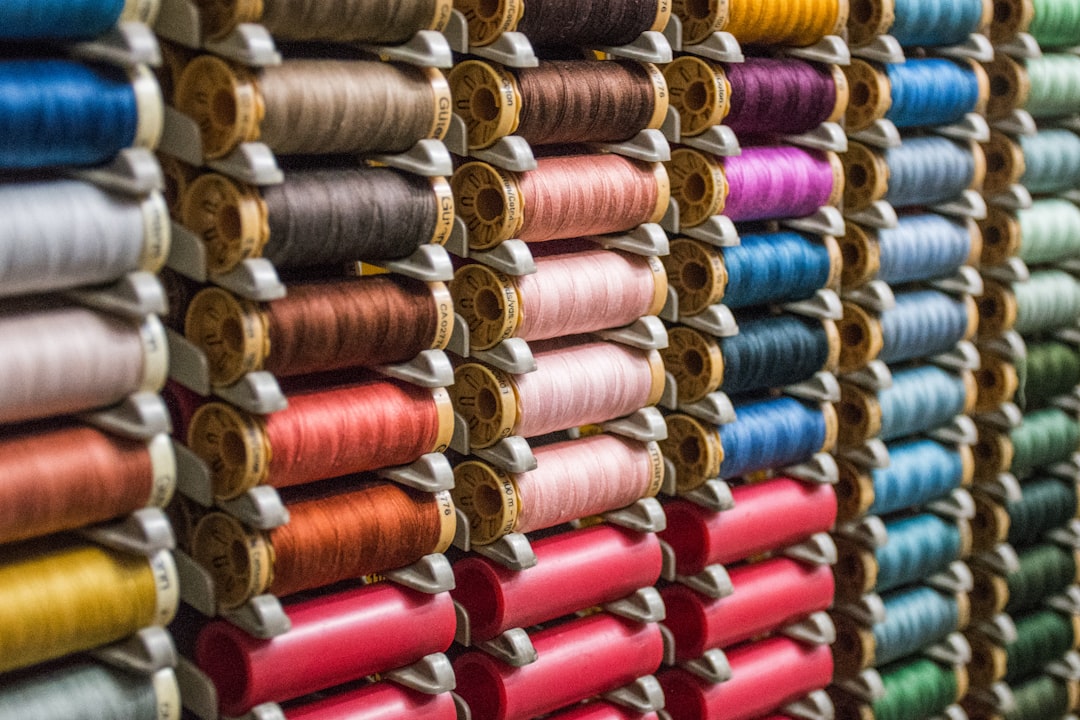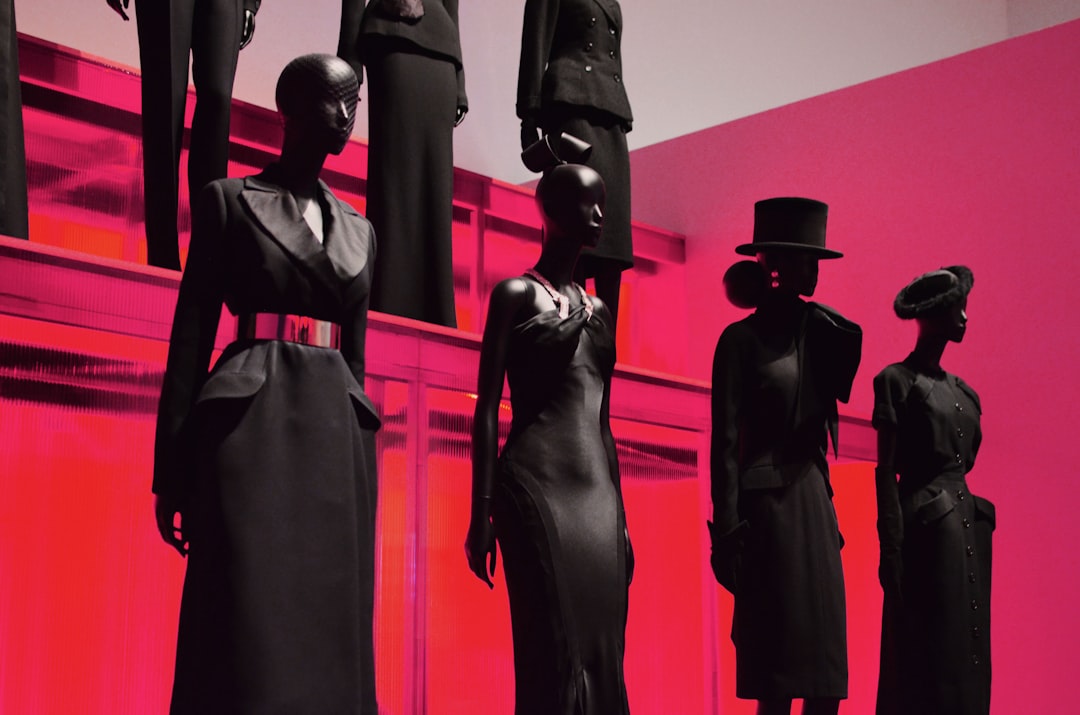Fashion and technology may seem like two vastly different industries. However, the integration of coding into the world of fashion has created an incredible intersection that is leading to a whole new era of innovation and creativity. From design to manufacturing, virtual fitting rooms to wearable tech, sustainability to art and fashion, the possibilities are limitless. In this blog post, we will explore the different ways in which coding is revolutionizing the fashion industry and the incredible impact it has on the way we think about clothing. So, whether you are a fashion enthusiast or a tech-savvy individual, get ready to be amazed by the incredible ways in which coding and fashion collide. Let’s dive in!
From Design to Manufacturing: How Coding Streamlines the Process
When it comes to the fashion industry, design is only the beginning. Once a design has been finalized, the next step is to transform it into a tangible product – a time-consuming and often costly process. This is where coding plays a crucial role in streamlining the process, reducing costs, and increasing efficiency.
At the heart of coding lies the ability to automate previously manual tasks. For example, coding can be used to create patterns that can be printed onto fabric, replacing the need for manual outlining and cutting. This not only speeds up the process but also reduces costs associated with labor and waste.
In addition to pattern-making, coding can also be used to simulate designs before they are physically produced. This allows designers to experiment with different designs and fabrics without the need for physical prototypes, further reducing costs and increasing efficiency.
Once a design has been finalized, coding can also be used to automate the manufacturing process. For example, computer-controlled machines can be programmed to sew, cut, and finish garments, replacing the need for manual labor.
Not only does coding streamline the manufacturing process, but it also allows for more precise and accurate production. Thanks to advanced algorithms and machine learning, machines can now produce intricate designs with greater precision than ever before.
Coding plays a critical role in streamlining the manufacturing process, reducing costs, and increasing efficiency in the fashion industry. As technology continues to advance, we can expect to see even greater integration of coding into the fashion industry, further revolutionizing the way we design and produce clothing.
This is where coding plays a crucial role in streamlining the process, reducing costs, and increasing efficiency.
Virtual Fitting Rooms: How Coding Enhances the Shopping Experience
When it comes to shopping, one of the biggest challenges is finding the right size and fit. This is especially true when it comes to online shopping, where the lack of physical interaction with the product can make it difficult to know whether or not it will fit properly. However, with the rise of virtual fitting rooms, finding the perfect fit has become much easier, thanks to the integration of coding into the shopping experience.
Virtual fitting rooms use 3D technology to create a digital replica of the customer’s body, which is then used to try on clothing virtually. This technology uses a combination of cameras and software to capture the customer’s body measurements, which are then used to create a 3D model. The customer can then select the clothing they want to try on from a virtual catalog, and the 3D model will try it on, allowing the customer to see how it fits and looks on their body.
The benefits of virtual fitting rooms are vast. Firstly, they allow customers to try on clothing without actually having to physically put it on, which can save time and energy. Additionally, they provide a more accurate representation of how the clothing will look and fit on the customer’s body, which can lead to more informed purchasing decisions.
Beyond this, virtual fitting rooms also offer an opportunity for retailers to provide a more personalized shopping experience. By collecting data on the customer’s body measurements and preferences, retailers can use this information to recommend clothing that will fit and flatter the customer’s body type. This not only increases the likelihood of a successful sale but also encourages customer loyalty and repeat business.
Overall, virtual fitting rooms are just one example of how coding is enhancing the shopping experience. By using technology to create a more personalized and accurate representation of the customer’s body, retailers can provide a more efficient and enjoyable shopping experience for their customers. As technology continues to evolve, we can expect to see even more innovative ways in which coding is used to improve the fashion industry.
Wearable Tech: How Coding is Used to Create Smart Clothing
The integration of technology into fashion has brought about the rise of wearable tech, which refers to smart clothing that is designed to enhance the wearer’s experience. From fitness trackers to smartwatches and even clothing that can monitor health and wellbeing, wearable tech is quickly becoming a popular trend in the fashion industry. But what exactly goes into creating these high-tech garments? The answer lies in coding.
The application of coding in wearable tech enables designers to create clothing that can perform a wide range of functions. For instance, sensors can be embedded into clothing to monitor heart rate, temperature, and even posture. This data can then be collected and analyzed to provide insights into the wearer’s health and wellbeing. Additionally, wearable tech can be programmed to respond to different stimuli, such as changes in body temperature or the wearer’s movements.
One of the biggest advantages of using coding to create wearable tech is the ability to customize it according to the wearer’s preferences. For instance, a fitness enthusiast may want a smart shirt that can track their progress during workouts, while an office worker may prefer a smart jacket that can adjust to changes in temperature. With coding, designers can program wearable tech to suit different needs, making it a versatile solution for a range of users.
Another benefit of using coding in wearable tech is the potential for connectivity. Smart clothing can be designed to connect with other devices, such as smartphones, laptops, and even smart home systems. This connectivity can allow for seamless integration and automation, making it easier for users to manage their daily routines.
Of course, with any technology, there are also challenges that come with coding for wearable tech. For instance, the design process can be complex, as it involves integrating sensors and other components into the garment while maintaining its aesthetic appeal. Additionally, wearable tech must be designed to be both durable and washable, which can pose additional challenges.
Despite these challenges, the use of coding in wearable tech shows great promise for the future of fashion. As technology continues to evolve, so too will the possibilities for smart clothing. From health monitoring to connectivity and customization, wearable tech has the potential to revolutionize the way we think about fashion.
One of the biggest advantages of using coding to create wearable tech is the ability to customize it according to the wearer’s preferences.
Sustainability: How Coding Aids in Environmentally Conscious Fashion
As consumers become increasingly aware of the environmental impact of their fashion choices, sustainability has become a crucial consideration for brands. Thankfully, coding can provide solutions that allow fashion to be both stylish and environmentally conscious.
One way that coding aids in sustainable fashion is through the optimization of manufacturing processes. By analyzing data and utilizing algorithms, fashion brands can reduce waste in their production. This not only benefits the environment but also the brand’s bottom line.
Coding can also be used to develop innovative materials that are eco-friendly. For example, some companies have used coding to create fabrics made from recycled materials or materials that require less water to produce. These innovations not only reduce waste but also help to conserve natural resources.
Through the use of coding, fashion brands can also create sustainable supply chains. By tracking the movement of materials and products, brands can ensure that their production processes are ethical and environmentally responsible. This reassures customers that their purchases are not contributing to harmful practices.
Lastly, coding can help brands to design products with sustainability in mind. For example, by using 3D modeling and simulations, designers can test different materials and designs before producing physical prototypes. This results in less waste and a more efficient design process.
Coding plays a critical role in the creation of environmentally conscious fashion. By optimizing manufacturing processes, developing innovative materials, creating sustainable supply chains, and designing with sustainability in mind, fashion brands can reduce their impact on the environment while still creating fashionable and desirable products. The possibilities for sustainable fashion are endless, and coding is sure to be an essential tool in achieving this future.
Through the use of coding, fashion brands can also create sustainable supply chains.
Art and Fashion: How Coding Allows for Creative Expression
When it comes to fashion, the role of art cannot be ignored. From the intricate designs of haute couture to the bold statements of streetwear, fashion is a canvas for artistic expression. And with the emergence of coding in fashion, artists and designers are now able to push the boundaries of creativity even further.
Coding allows for the creation of unique and customizable designs that were once impossible to achieve. It opens up a whole new world of possibilities for fashion designers, giving them the tools to experiment with different patterns, shapes, and colors. By combining the principles of coding with traditional fashion design techniques, designers are able to create garments that are not only visually stunning, but also functional and practical.
One example of how coding has allowed for creative expression in fashion is the use of generative design. Generative design involves using algorithms to create designs that are unique and adaptable. By inputting certain parameters, such as color or texture, designers can create designs that are constantly evolving and changing. This technique has been used by fashion brands like Nike, who used generative design to create a shoe that was both lightweight and durable.
Another way that coding has allowed for creative expression in fashion is through the use of interactive garments. Interactive garments are designed with sensors and other electronic components that allow the wearer to control certain aspects of the garment, such as its color or pattern. This creates a truly interactive experience for the wearer, making the garment not just a piece of clothing, but a work of art.
The use of coding in fashion has also allowed for a more collaborative approach to design. With the rise of open-source software and online communities, designers and artists are able to share their code and work together on projects. This has led to the creation of new and innovative designs, as well as the democratization of fashion.
Coding has had a significant impact on the world of fashion, allowing for new and exciting forms of creative expression. Through the use of generative design, interactive garments, and collaborative approaches, designers and artists are able to push the boundaries of what is possible in fashion. As technology continues to advance, the possibilities for coding in fashion are truly limitless.
As technology continues to advance, the possibilities for coding in fashion are truly limitless.
Conclusion: The Future of Coding in Fashion and its Limitless Possibilities
As we have explored in the previous six sections of this blog post, the intersection of coding and fashion has opened up a world of possibilities. From streamlining the design process to creating bespoke virtual fitting rooms, and from smart clothing to sustainable fashion, it is clear that coding is changing the way we think about fashion.
Looking forward, it is safe to say that the future of coding in fashion is bright. With the constant advancements in technology, we are likely to see more and more innovative uses for coding in the fashion industry. This could include the creation of even smarter wearables, the development of new sustainable materials, and the use of augmented reality to enhance the shopping experience.
One of the most exciting aspects of coding in fashion is the limitless possibilities it presents. With the right coding skills, fashion designers and manufacturers can bring their wildest ideas to life. This opens up a whole new realm of creative expression and experimentation in the fashion industry.
However, it is important to note that the future of coding in fashion is not without its challenges. As more and more fashion companies begin to incorporate coding into their processes, there will be a growing demand for skilled coders. It is up to educators and industry professionals to work together to ensure that the next generation of fashion designers and coders have the skills they need to succeed.
In conclusion, the intersection of coding and fashion represents an exciting and rapidly evolving field. From enhancing the shopping experience to creating sustainable fashion, coding has already had a significant impact on the fashion industry. Looking forward, there is no doubt that we will continue to see innovative uses for coding in fashion, and the possibilities are truly limitless.





